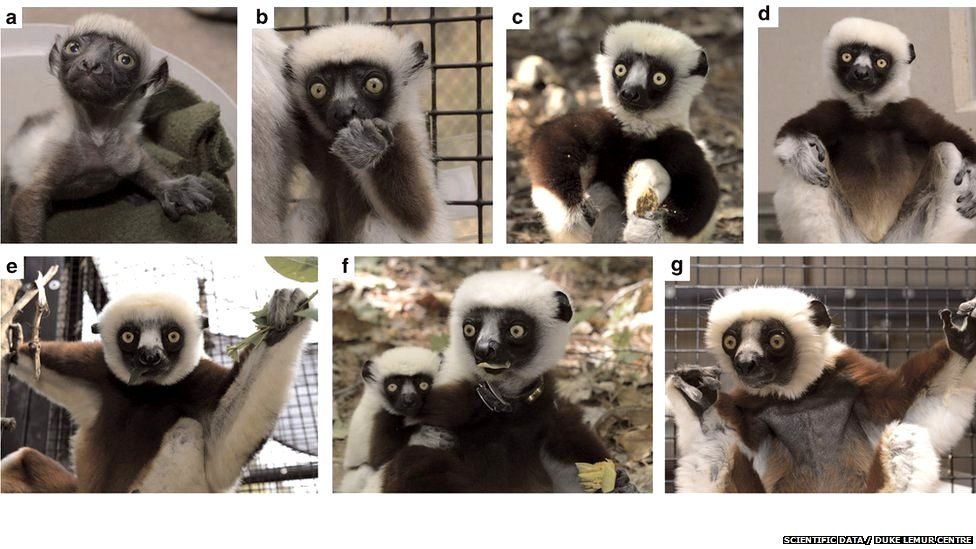The lives of lemurs, uploaded to the web
- Published

Fifty years of data, from the lives of nearly 4,000 endangered primates at the Duke Lemur Centre, have been transferred from ageing paper records into a public, online database. The resource, announced in the journal Scientific Data, includes information from all the life stages shown here - from birth to old age.
Lemurs at the centre, like this baby aye-aye, are weighed throughout their lives. Researchers hope that sharing the data will help with caring for the animals in captivity and protecting them in the wild.
Among the lives recorded in the new database is that of this small senior citizen called Jonas - at 29 years, the oldest captive dwarf lemur in history. Cataracts are almost ubiquitous among "geriatric" lemurs (those over 25).
Another favourite of the Duke Lemur Centre staff was Amor, a black and white ruffed lemur who was born in 1981 and fathered twin boys five days before his death at the ripe old age of 32, in May 2013.
The primates at the centre include lemurs, lorises and galagos - all from the strepsirrhini family, which predates monkeys and apes. Shown here are infant examples of (a) crowned lemur, (b) ring-tailed lemur, (c) red ruffed lemur, (d) blue-eyed black lemur, (e) pygmy loris, and (f) Coquerel's sifaka.
The blue-eyed black lemur (only the males turn black, at about 8 weeks of age) is critically endangered in the wild. This is one of only two breeding females in North America, both housed at the Duke Lemur Centre.
This is a family of blue-eyed black lemurs, with the male leaping and the female carrying her male infant, who is starting to show black fur.
Coquerel's sifaka is an endangered species of lemur and the Duke Lemur Centre manages all 60 known captive sifaka.
Coquerel's sifaka can leap 10m in a single jump, helpfully demonstrated here by a female named Drusilla, with her young juvenile Aemelia on board for the ride.
One of the centre's baby aye-aye, born in November 2011, was christened Elphaba. This was her first foray from the nest in February 2012, weighing about 650g.
Elphaba the aye-aye is now two-and-a-half years old. The Duke Lemur Centre managed the first successful aye-aye birth in captivity.
Crowned lemurs were recently elevated to endangered status. Shown here are two males, Horus (in focus) and his father Mosi (foreground). Studies in the wild show that crowned lemurs are just as likely to have twins as a single offspring.
The pygmy slow loris, meanwhile, has twins some 61% of the time - just like this tiny pair.
Another set of twins, this time ring-tailed lemurs called LuLu and Willow, born in March 2014 and here being carried by their mother Sprite. Altogether the Duke Lemur Centre's population is the world's largest collection of endangered primates, and its online life-history resource will support future studies in a variety of disciplines. Words by Jonathan Webb